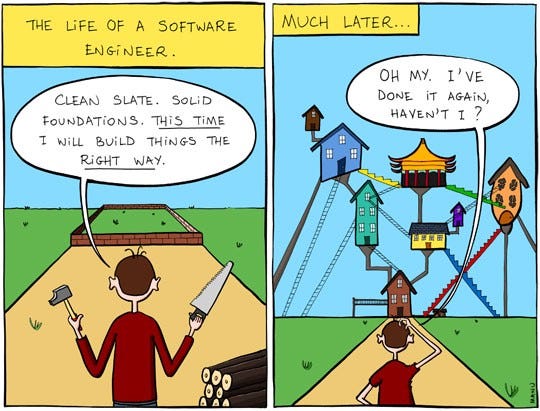Architects Blueprints for Software Development
25 Apr 2024
Uncoded Waters and the Guiding Lights
In the vast sea of software development, where lines of code stretch out like uncharted waters, it is easy to find yourself lost amongst the complex and intricate systems and architecture. How do we stay afloat and navigate to our goal? Just as sailors rely on maps and navigational tools to traverse the ocean, software engineers have design patterns at their disposal to light the way through the expansive sea of code.
The Architects
Let’s switch perspectives now: Imagine we are architects, with the purpose of designing the most grand and magnificent city. How do we structure the streets? Where should we place the buildings? What layouts ensure an efficiently functional and beautiful city? Thankfully, we are not the first people to encounter such issues. Many architects have pondered and succeeded in solving these problems in the past, and have left behind blueprints that may aid us. Design patterns are akin to these architectural blueprints, acting as guides to solving common problems in the software development.
One such design pattern is the “Singleton”, which we can take to be the government or the mayor of our city. Just as only one mayor may exist within our city at a time, the Singleton pattern ensures that only one instance of a class exists, regardless of how many times it is instantiated. This is important since it prevents the duplication of vital resources.
Another pattern is the “Observer” pattern, which can be likened to the security cameras and watchtowers monitoring and giving updates on the state of the city. Just like how our security would update us on impending dangers or potential developments, the Observer pattern allows for the interaction between objects and notifications, a key component in keeping communication fluid.
The city should have distinct districts, each with their own unique features and capabilities. Just as the residents within these districts interact with their immediate surroundings without needing to see the inner workings of neighboring districts, the “Module” pattern encapsulates related functions and data, supporting the reusability, maintanability, and scalability of resources. In projects that I have worked on, many have relied on creating multiple individual components that work in unison to create something bigger and better.
As we dive further into the city, we need eye-catching and iconic landmarks. The buildings must be sleek, the gardens and parks green with life. This would be the “Facade” pattern, which serves as the simplified and beautiful interface that conceals the complex infrastructure. A simplified interface allows for ease of use and navigation, shielding the users from the intricate workings behind the scenes. This is my favorite type of pattern, as creating elegant and sleek interfaces for users allows for creativity to flow like fountains. During the development of applications, user interface and experience are always a prominent point I try to implement.
In essence, design patterns serve as the guiding principles and best practices that architects of software systems rely on in order to construct reliable and scalable applications. The use of these patterns allow developers to navigate the complexities of software development with confidence, just like the architects who have sculpted our city skylines.